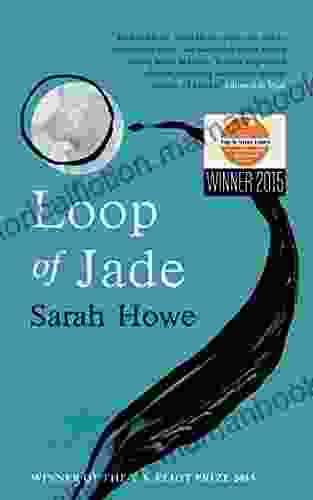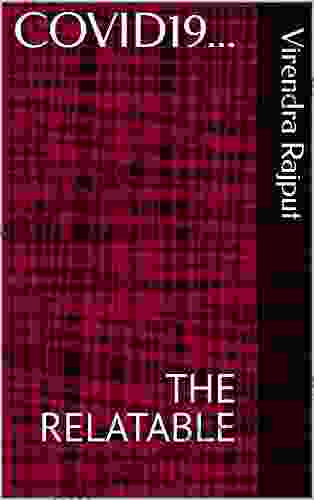How To Think Like a Computer Scientist

Computer science is the study of computation and information. It is a vast and complex field, but at its core, it is about understanding how to solve problems using computers. To do this, computer scientists need to be able to think like computers. This means being able to break down problems into small, manageable steps, and then designing algorithms that can be executed by a computer to solve those steps.
4.6 out of 5
| Language | : | English |
| File size | : | 2612 KB |
| Text-to-Speech | : | Enabled |
| Screen Reader | : | Supported |
| Enhanced typesetting | : | Enabled |
| Print length | : | 467 pages |
In this article, we will explore some of the key concepts of computer science and how they can help you to think like a computer scientist. We will also provide some tips on how to develop your computational thinking skills.
Problem Decomposition
One of the most important skills for a computer scientist is the ability to decompose problems into smaller, manageable steps. This is because computers can only understand and execute instructions that are very simple and specific. By breaking down a problem into smaller steps, computer scientists can make it easier for the computer to solve.
For example, let's say you want to write a program to calculate the average of a list of numbers. You could start by breaking the problem down into the following steps:
- Get the list of numbers from the user.
- Add up all the numbers in the list.
- Divide the sum of the numbers by the number of numbers in the list.
Once you have broken the problem down into smaller steps, you can start to write the code to implement each step. By following this process, you can make it easier for the computer to understand and execute your program.
Algorithms
An algorithm is a step-by-step procedure for solving a problem. Algorithms are used in all areas of computer science, from sorting and searching to machine learning and artificial intelligence. To write an effective algorithm, computer scientists need to be able to think through the problem carefully and identify the steps that need to be taken to solve it.
There are many different types of algorithms, but they all share some common characteristics. First, algorithms are precise and unambiguous. This means that each step of the algorithm must be defined clearly and in a way that can be understood by the computer. Second, algorithms are efficient. This means that they should use as few resources as possible, such as time and memory.
Here is an example of a simple algorithm for calculating the average of a list of numbers:
1. Get the list of numbers from the user. 2. Set the sum of the numbers to 0. 3. For each number in the list: - Add the number to the sum. 4. Divide the sum by the number of numbers in the list. 5. Return the average.
This algorithm is precise and unambiguous, and it is also efficient. It uses only a few resources, and it can be easily implemented in a programming language.
Computational Thinking
Computational thinking is the ability to solve problems and design systems using computational methods. It is a way of thinking that is based on the principles of computer science. Computational thinking involves:
- Decomposition: Breaking down problems into smaller, manageable steps.
- Abstraction: Identifying the essential elements of a problem and ignoring the details that are not important.
- Pattern recognition: Identifying patterns and regularities in data.
- Algorithms: Designing step-by-step procedures for solving problems.
- Data representation: Representing data in a way that can be processed by a computer.
Computational thinking is a valuable skill for anyone who wants to work in the field of computer science. It is also a useful skill for anyone who wants to solve problems and design systems in other fields, such as business, education, and healthcare.
Tips for Developing Computational Thinking Skills
Here are some tips for developing your computational thinking skills:
- Practice solving problems. The best way to improve your computational thinking skills is to practice solving problems. Try to solve problems that are challenging but not too difficult. As you solve problems, you will start to develop a better understanding of the principles of computer science.
- Learn a programming language. One of the best ways to learn computational thinking is to learn a programming language. Programming languages allow you to express your thoughts in a way that can be understood by a computer. As you learn to program, you will start to develop a better understanding of how computers work.
- Read about computer science. There are many great books and articles about computer science. Reading about computer science will help you to learn about the history of the field, the different areas of research, and the latest advances.
- Attend computer science events. There are many computer science events that are held throughout the year. Attending these events is a great way to learn about new technologies and meet other people who are interested in computer science.
By following these tips, you can develop your computational thinking skills and become a better problem solver and designer.
Computer science is a vast and complex field, but at its core, it is about understanding how to solve problems using computers. To do this, computer scientists need to be able to think like computers. This means being able to break down problems into small, manageable steps, and then designing algorithms that can be executed by a computer to solve those steps.
Computational thinking is a valuable skill for anyone who wants to work in the field of computer science. It is also a useful skill for anyone who wants to solve problems and design systems in other fields, such as business, education, and healthcare.
4.6 out of 5
| Language | : | English |
| File size | : | 2612 KB |
| Text-to-Speech | : | Enabled |
| Screen Reader | : | Supported |
| Enhanced typesetting | : | Enabled |
| Print length | : | 467 pages |
Do you want to contribute by writing guest posts on this blog?
Please contact us and send us a resume of previous articles that you have written.
 Top Book
Top Book Novel
Novel Fiction
Fiction Nonfiction
Nonfiction Literature
Literature Paperback
Paperback Hardcover
Hardcover E-book
E-book Audiobook
Audiobook Bestseller
Bestseller Classic
Classic Mystery
Mystery Thriller
Thriller Romance
Romance Fantasy
Fantasy Science Fiction
Science Fiction Biography
Biography Memoir
Memoir Autobiography
Autobiography Poetry
Poetry Drama
Drama Historical Fiction
Historical Fiction Self-help
Self-help Young Adult
Young Adult Childrens Books
Childrens Books Graphic Novel
Graphic Novel Anthology
Anthology Series
Series Encyclopedia
Encyclopedia Reference
Reference Guidebook
Guidebook Textbook
Textbook Workbook
Workbook Journal
Journal Diary
Diary Manuscript
Manuscript Folio
Folio Pulp Fiction
Pulp Fiction Short Stories
Short Stories Fairy Tales
Fairy Tales Fables
Fables Mythology
Mythology Philosophy
Philosophy Religion
Religion Spirituality
Spirituality Essays
Essays Critique
Critique Commentary
Commentary Glossary
Glossary Bibliography
Bibliography Index
Index Table of Contents
Table of Contents Preface
Preface Introduction
Introduction Foreword
Foreword Afterword
Afterword Appendices
Appendices Annotations
Annotations Footnotes
Footnotes Epilogue
Epilogue Prologue
Prologue Isabella Emma
Isabella Emma John M Barry
John M Barry Muna Cali
Muna Cali Marcia Talley
Marcia Talley Cyprian Norwid
Cyprian Norwid Shelley Marshall
Shelley Marshall Deborah Cain
Deborah Cain Will Chesney
Will Chesney Amy Klein
Amy Klein Evelyn Ryan
Evelyn Ryan Rachel Janney
Rachel Janney Simon Barker
Simon Barker Velsoft Training Materials Inc
Velsoft Training Materials Inc Jan Needle
Jan Needle Catalina Dubois
Catalina Dubois American College Of Veterinary Behaviorists
American College Of Veterinary Behaviorists Amina Akhtar
Amina Akhtar Nj Perez
Nj Perez Faith Blum
Faith Blum Ignacio J Esteban
Ignacio J Esteban
Light bulbAdvertise smarter! Our strategic ad space ensures maximum exposure. Reserve your spot today!

 Wayne CarterGood Girl Rockstar Romance: A Wickedly Enchanting Tale of Love, Music, and...
Wayne CarterGood Girl Rockstar Romance: A Wickedly Enchanting Tale of Love, Music, and...
 Isaiah PowellSavage Hunt: Unleash the Thrilling Pursuit in Ryan Savage's Gripping Crime...
Isaiah PowellSavage Hunt: Unleash the Thrilling Pursuit in Ryan Savage's Gripping Crime... Charles ReedFollow ·4.9k
Charles ReedFollow ·4.9k Jesse BellFollow ·10.9k
Jesse BellFollow ·10.9k Gene PowellFollow ·2.9k
Gene PowellFollow ·2.9k Arthur MasonFollow ·7.7k
Arthur MasonFollow ·7.7k Oscar WildeFollow ·12.7k
Oscar WildeFollow ·12.7k Fred FosterFollow ·15.9k
Fred FosterFollow ·15.9k Andres CarterFollow ·3.3k
Andres CarterFollow ·3.3k Andy HayesFollow ·5.7k
Andy HayesFollow ·5.7k

 Allen Ginsberg
Allen GinsbergUnlocking Financial Peace with Low Risk Investing: A...
In the world of investing, it is often said...

 Eddie Powell
Eddie PowellLoop of Jade: An Exploration of Grief, Memory, and the...
Sarah Howe's...

 Zachary Cox
Zachary CoxHealth Benefits in Retirement: Navigating the Maze of...
Retirement...
4.6 out of 5
| Language | : | English |
| File size | : | 2612 KB |
| Text-to-Speech | : | Enabled |
| Screen Reader | : | Supported |
| Enhanced typesetting | : | Enabled |
| Print length | : | 467 pages |














